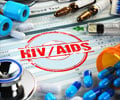About 40,000 people are infected with HIV every year in the US, with half the cases in people under 25. More than three-quarters of all U.S. patients
About 40,000 people are infected with HIV every year in the US, with half the cases in people under 25. More than three-quarters of all U.S. patients with the AIDS virus have an infection that resists one or more of the drugs used to treat it. Drug-resistant HIV had spread faster and the lifesaving cocktails of drugs that help many patients lead normal lives were becoming increasingly limited in their usefulness.
Unless better drugs are developed soon, or until a vaccine is invented that can control the virus, patients will have ever-lessening chances of using drugs to counter AIDS. Richman and colleagues tested blood samples from 1,647 men and women. They used a test to show how the virus responded to the many available drugs used to treat HIV. Of these, 78 percent carried virus that resisted at least one drug. Just over 50 percent of them were resistant to more than one class of drugs.Bacteria are known to mutate to resist drugs, which is why new antibiotics are being developed regularly. But Richman said a virus such as HIV is trickier than any bacteria. The reason is this virus replicates to higher levels at faster rates, so it evolves faster. Once resistance is there, it stays in a patient for the rest of his or her life. With bacteria, it is often possible to take a patient off antibiotics and so-called wild-type bacteria will eventually move in and push out the drug-resistant versions. Not so with HIV, which lurks in the body for decades, perhaps forever.
HIV has no cure and is always fatal, but mixes of drugs, known as highly active antiretroviral therapy (HAART) can keep patients alive and living near-normal lives for years. There are four classes of these drugs available, each of which attacks HIV at a different point, and a mixture is required to make it work. The timing and composition of this cocktail is an art for AIDS doctors.











